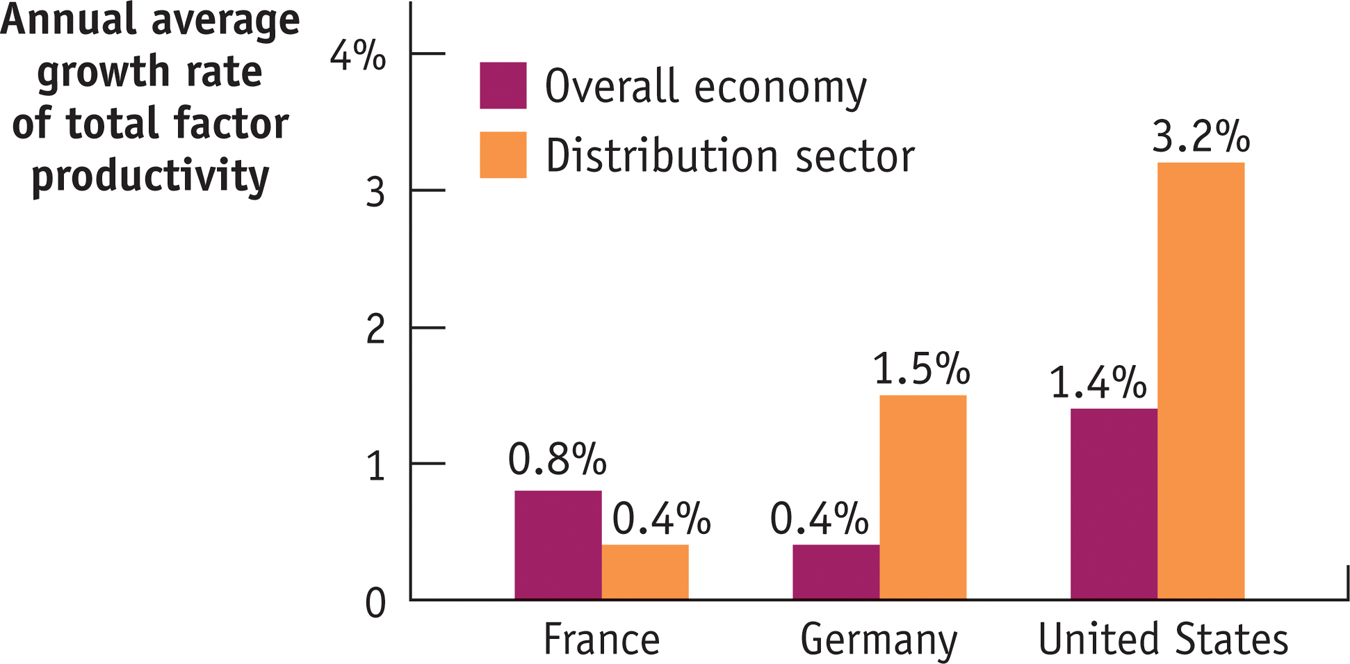Big Box Boom
After 20 years of being sluggish, U.S. productivity growth accelerated sharply in the late 1990s; that is, productivity began to grow at a much faster rate than previously. What caused that acceleration? Was it the rise of the Internet?

Not according to analysts at McKinsey and Co., the famous business consulting firm. They found that a major source of productivity improvement after 1995 was a surge in output per worker in retailing—
Other analysts agree. The accompanying figure shows the result of an analysis of total factor productivity growth in France, Germany, and the United States between 1995 and 2004, the decade of the U.S. productivity surge. As you can see, the United States did considerably better than either European nation. The key to the surge was very fast growth in the productivity of the distribution sector, that is, in wholesale and retail trade.
Why did productivity surge in retailing in the United States? “The reason can be explained in just two syllables: Walmart,” wrote McKinsey.

Walmart is famed in the business world for its successful focus on the unglamorous but crucial area of logistics: getting stuff where it was needed, when it was needed. Walmart was one of the first companies to use computers to track inventory, to use bar-
There are two lessons from the “Walmart effect,” as McKinsey calls it. One is that how you apply a technology makes all the difference: everyone in the retail business knew about computers, but Walmart figured out what to do with them. The other is that a lot of economic growth comes from everyday improvements rather than flashy new technologies.
Questions for Thought
Question
1.In this section we described several sources of productivity growth. Which of these sources corresponds to the “Walmart effect”?
Question
2.How does the Walmart story relate to the “information technology paradox”?